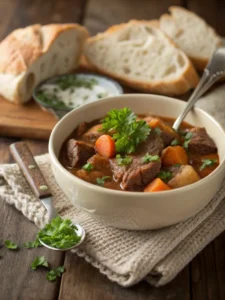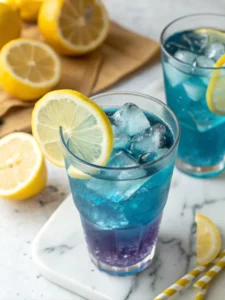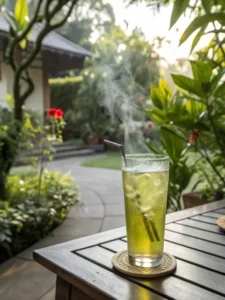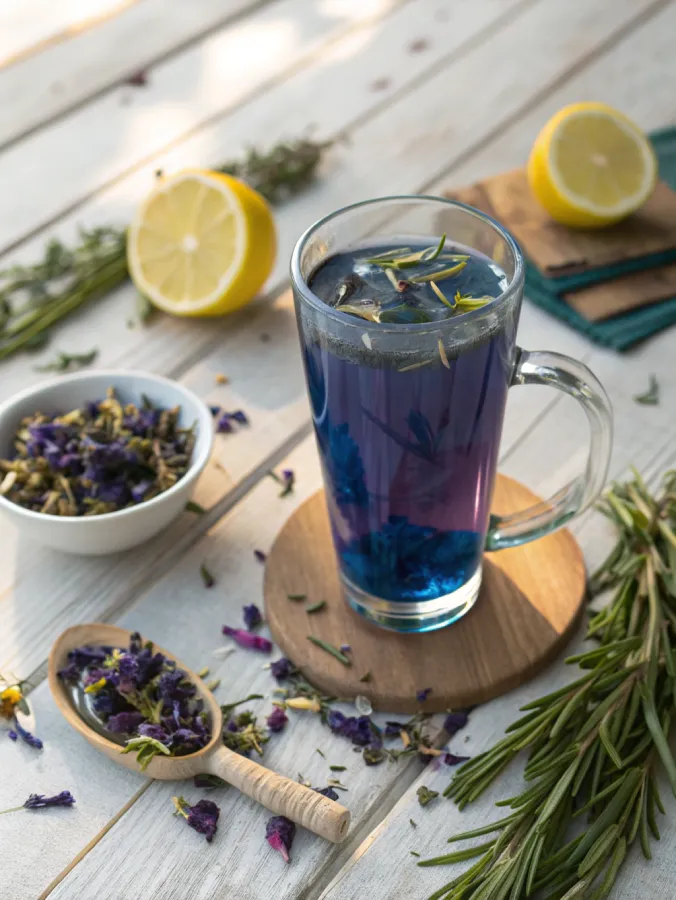
Butterfly pea flower tea is catching everyone’s eye, and not just because of its magical color-changing trick. Behind that deep blue hue is a powerhouse of plant-based benefits, from antioxidants to stress relief. But it’s not just a wellness trend, it’s steeped in centuries of Ayurvedic tradition. Whether you’re sipping it hot or mixing it into a vibrant lemonade, this tea brings more than beauty to your mug. In this article, you’ll discover the real benefits, who should be cautious, how it tastes, and how to enjoy it safely. Let’s brew up everything you need to know about butterfly pea flower tea.
In this Article
ey Takeaways: What You Need to Know
- Butterfly pea flower tea offers antioxidants, cognitive support, and a calming effect.
- It’s safe in moderation but may cause side effects in certain individuals.
- Its flavor is mild and earthy, with a vibrant blue hue that shifts color with pH changes.
- Not ideal for pregnant women or those on blood sugar/hormone medications.
- Enjoyed as hot tea, lemonade, latte, or cocktail base.
Health Benefits of Butterfly Pea Flower Tea
Packed With Antioxidants and Brain-Boosting Compounds
Butterfly pea flower tea is more than just a visual showstopper, it’s loaded with health-supporting compounds that can give your body and brain a noticeable lift. Its brilliant blue color comes from anthocyanins, powerful antioxidants that protect your cells from oxidative stress, one of the root causes of chronic diseases and early aging.
These same antioxidants are found in green tea, but butterfly pea adds a unique nootropic benefit. It may increase acetylcholine in the brain, a neurotransmitter that supports memory and clarity. If you’re looking for mental sharpness without the caffeine crash, this tea is a beautiful choice.
You don’t need to overthink it. A midday brew is perfect when you need a pick-me-up that also nourishes your nervous system.
Stress Relief, Skin Glow, and Digestive Aid
Butterfly pea tea is known in traditional wellness circles for its calming effects. It’s naturally caffeine-free and filled with flavonoids that ease stress and reduce inflammation. This not only helps with sleep but also promotes glowing skin by lowering internal inflammation.
You’ll also find it used to support digestion. Drinking a warm cup after a meal can ease bloating and gently stimulate bile for better absorption of nutrients, similar to benefits found in Mediterranean ingredients listed in our anti-inflammatory food guide.
For a full wellness routine, pair your tea with something comforting like this soft banana bread or a slice of warming pumpkin bread for the ultimate teatime moment.
Potential Side Effects You Should Know
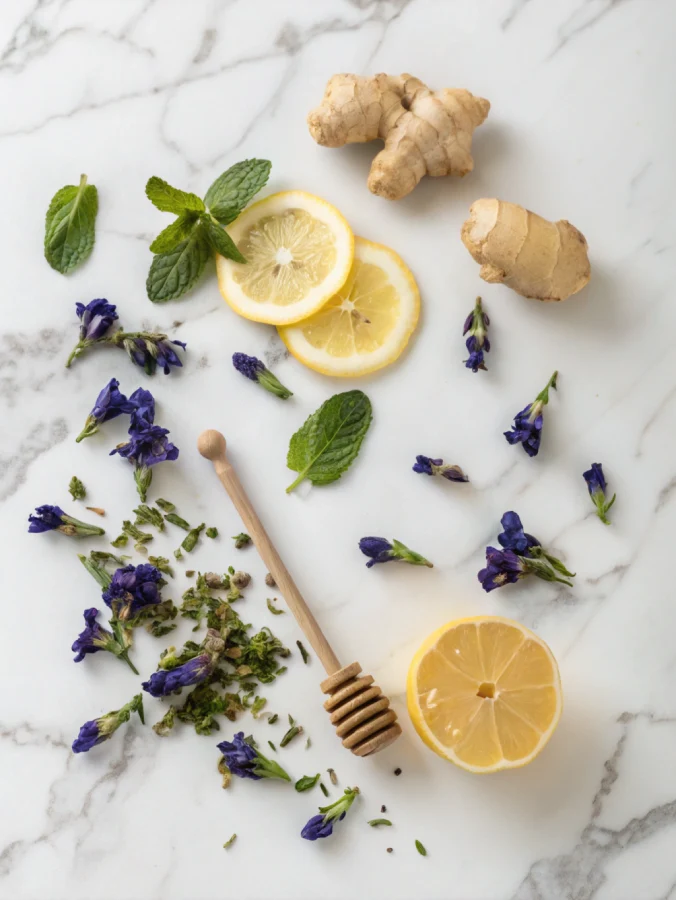
When Too Much of a Good Thing Backfires
Butterfly pea flower tea is generally safe for most people, but moderation is key. Drinking more than 2 cups daily, especially on an empty stomach, can trigger unwanted symptoms. The most common issues include:
| Side Effect | Symptoms | Prevention Tip |
|---|---|---|
| Digestive upset | Nausea, bloating, mild diarrhea | Stick to 1–2 cups per day; drink with food |
| Allergic reactions | Itching, swelling, rashes | Test with a small sip before full serving |
| Blood sugar drops | Dizziness, lightheadedness | Avoid if you’re on diabetes meds; monitor glucose |
Because butterfly pea flower tea may lower blood sugar, it’s important to be cautious if you have hypoglycemia or are on insulin therapy. Adding it without guidance may intensify medication effects and lead to sugar crashes.
To stay on the safe side, pair your tea with a balanced Mediterranean-style snack or sip it after meals rather than first thing in the morning.
Hormonal and Diuretic Effects: Who Should Avoid It
One lesser-known property of butterfly pea flower tea is its phytoestrogen content, natural plant compounds that mimic estrogen in the body. While this can help some women during menopause, it may disrupt hormone balance in others.
Avoid or limit consumption if you are:
- Pregnant or breastfeeding
- On hormone-sensitive medications (e.g. for thyroid, fertility, or estrogen dominance)
- Experiencing irregular cycles
The tea also acts as a mild diuretic, encouraging water loss. When consumed in large amounts or paired with high-sodium detox routines like the pink salt trick, this can lead to dehydration and electrolyte imbalances.
For hydration support, balance your intake with mineral-rich drinks or add a pinch of Celtic salt to your water to maintain your body’s fluid equilibrium.
How Often Is Safe to Drink Butterfly Pea Tea?
Daily Use Guidelines and Dosage
Butterfly pea flower tea may feel like the perfect health ritual, but how often is too often?
For most healthy adults, 1–2 cups per day is considered a safe and effective range. This amount supports brain function and stress relief without pushing the limits on its more sensitive effects like blood sugar reduction or hormonal influence.
Here’s how to build it into your routine without overdoing it:
- Drink it after meals, especially lunch or dinner
- Avoid having it first thing on an empty stomach
- Cycle your usage: 5 days on, 2 days off to prevent overaccumulation
- Choose high-quality, organic dried flowers or tea bags
If you’re making it a daily ritual, rotate your infusions by alternating with other gentle teas. Our green tea guide offers an antioxidant-packed option with a caffeine kick for earlier in the day.
Who Should Check With Their Doctor First?
While butterfly pea flower tea is harmless for most people, some should approach with more caution or avoid it altogether.
You should consult your doctor before daily use if you:
- Take diabetes medications or insulin (due to blood sugar-lowering effects)
- Have low blood pressure
- Experience hormonal imbalances, PCOS, or estrogen-sensitive conditions
- Are pregnant or breastfeeding
- Take prescription diuretics or hormone therapy
If your goal is long-term detox or hydration, you may want to explore supportive, mineral-rich recipes like this Himalayan pink salt weight-loss drink, which complements herbal routines without hormonal concerns.
Always monitor how your body responds in the first few days. Start with half a cup and increase only if no adverse effects show up. Herbal teas are potent, listen to your body, not just the hype.

Butterfly Pea Flower Tea
Ingredients
Equipment
Method
- Boil 1 cup of water and pour it into a cup or teapot.
- Add the dried butterfly pea flowers.
- Steep for 5–7 minutes until the water turns deep blue.
- Strain out the petals using a tea strainer.
- Stir in honey to sweeten, if desired.
- Add lemon juice to watch it change color from blue to purple.
- Garnish with mint leaves and serve hot or over ice.
Nutrition
Notes
Tried this recipe?
Let us know how it was!What Does Butterfly Pea Flower Tea Taste Like?
Earthy, Mild, and Perfectly Neutral
One of the most surprising things about butterfly pea flower tea is its taste, it’s nothing like what its intense blue color suggests. The flavor is mild, earthy, and slightly grassy, almost like green tea but without the bitterness or caffeine punch.
It doesn’t have the floral notes of chamomile or the tartness of hibiscus, which makes it a perfect base for creative drinks. If you’re looking for a caffeine-free tea with a neutral profile, this one’s ideal.
Its understated flavor is actually a strength, it absorbs the character of whatever you add to it. This makes it an excellent foundation for iced teas, mocktails, and naturally colored lattes.
Pair it with your favorite banana bread muffins or a slice of pumpkin bread and you’ve got a calming tea moment that’s as cozy as it is colorful.
How to Make It Taste Amazing
The secret to making butterfly pea tea taste great lies in what you pair it with. Since it’s naturally neutral, it takes on the flavors of whatever you combine it with, while keeping its beautiful blue (or purple) appearance.
Here’s a table of common pairings:
| Additive | Effect on Taste | Color Change |
|---|---|---|
| Lemon Juice | Adds tang, brightens flavor | Turns tea purple or pink |
| Honey | Adds smooth sweetness | No color change |
| Mint Leaves | Adds cool, fresh notes | Keeps blue color |
| Ginger | Adds warming spice | Slightly darkens tea |
This versatility is why it’s trending in everything from lattes to cocktails. If you’re up for trying something refreshing, make it into a butterfly pea lemonade with lemon, ice, and a touch of honey. The dramatic color change makes it perfect for parties or Instagram-worthy moments.
For botanical insight, read the full Wikipedia article on Clitoria ternatea, the flower behind this tea.
Conclusion: Sip Smart, Glow Naturally
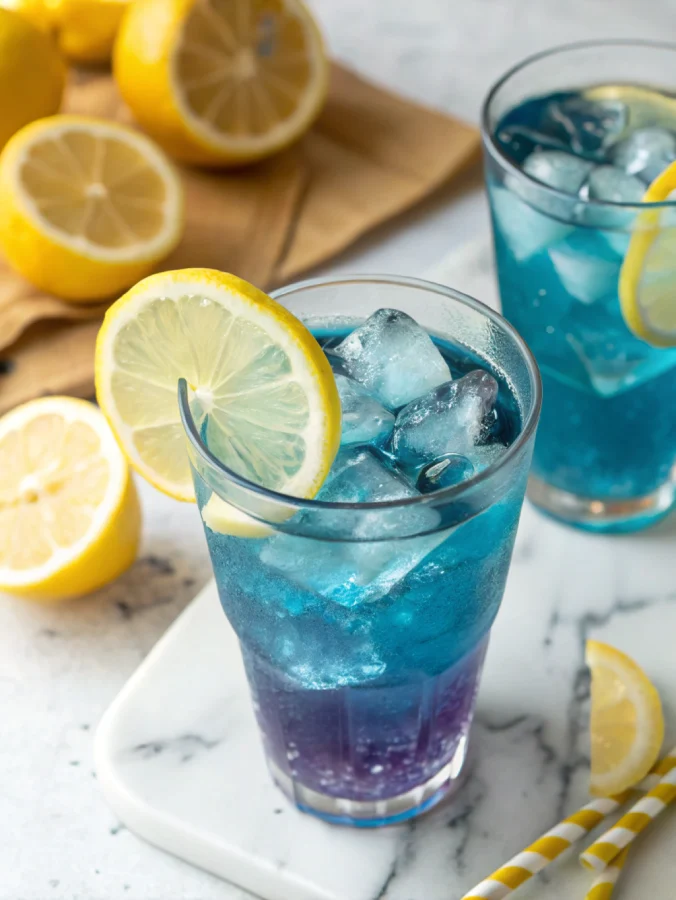
Butterfly pea flower tea is a vibrant herbal drink that’s as beneficial as it is beautiful. Whether you’re drawn to its striking blue hue, curious about its anti-aging antioxidants, or looking for a caffeine-free mental boost, this tea fits seamlessly into any wellness routine.
But like all things herbal, it’s important to listen to your body and stay mindful of dosage, especially if you’re pregnant or managing specific health conditions. Its gentle, calming nature makes it perfect for winding down, glowing up, and staying sharp.
Make it your next wellness ritual. Pair it with your favorite treat, enhance it with a slice of lemon, and turn each cup into a moment of calm, color, and nourishment.
FAQ
What does butterfly pea flower tea good for?
Butterfly pea flower tea is best known for its powerful antioxidants and brain-boosting compounds. It supports memory, lowers stress, and helps reduce inflammation in the body. It also promotes better skin, digestion, and mood balance thanks to its rich flavonoid content.
For a deeper dive into its traditional uses and preparation methods, check this butterfly pea tea guide that shares both cultural and health insights.
Who should not drink butterfly pea tea?
While safe for most, pregnant and breastfeeding women, and individuals with hormonal disorders or on blood sugar or diuretic medications, should avoid butterfly pea tea or consult a doctor first. Its phytoestrogen content and mild diuretic effect may interfere with sensitive conditions or medications.
Is it safe to drink butterfly pea tea every day?
Yes, when consumed in moderation. Drinking 1 to 2 cups per day is generally safe for healthy individuals. To stay balanced, cycle use weekly (e.g., 5 days on, 2 off) and always monitor your body’s response, especially if you’re combining it with other herbal or detox beverages.
What does butterfly pea tea taste like?
It has a mild, earthy, and slightly grassy flavor with no bitterness. On its own, it’s neutral, making it perfect for blending with lemon, honey, mint, or spices. Its taste is often compared to green tea without the caffeine. The magic really happens when you mix in lemon, it shifts from blue to vibrant purple.
